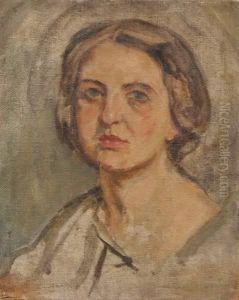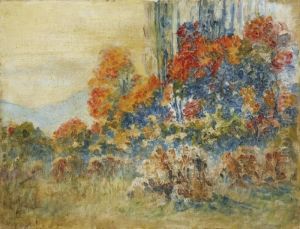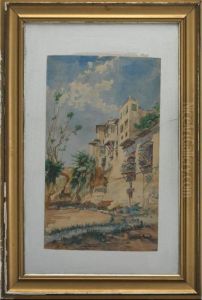Juan Francisco Gonzalez Paintings
Juan Francisco González was a pivotal figure in the development of Chilean painting, born on July 4, 1853, in Santiago, Chile, and passing away on June 6, 1933. His work is often associated with the transition from traditional to modern art in Chile, making significant contributions to the country's artistic heritage during the late 19th and early 20th centuries. González was part of a generation of artists who sought to break away from the academic style that dominated Chilean art in favor of a more personal, impressionistic approach. This group, known as the Generation of '13, was instrumental in introducing new ideas and techniques to the Chilean art scene, with González playing a key role in this movement.
González's early education took place at the Escuela de Bellas Artes in Santiago, where he was trained in the classical tradition. However, his artistic journey took a decisive turn when he traveled to Europe, particularly during his time in Paris. It was here that he was exposed to the works of the Impressionists and Post-Impressionists, which had a profound influence on his style and approach to painting. González's work gradually shifted towards a looser brushwork, a brighter palette, and a greater focus on capturing the fleeting effects of light and atmosphere, characteristics that would come to define his mature style.
Throughout his career, González was devoted to exploring the Chilean landscape and its people, often portraying rural scenes, cityscapes, and portraits with a sensitivity and intimacy that set his work apart. His paintings are noted for their emotional depth and ability to evoke the essence of Chilean identity and culture. Despite his embrace of impressionistic techniques, González's work remains deeply rooted in the Chilean experience, reflecting his lifelong commitment to depicting the life and landscapes of his homeland.
Juan Francisco González's contributions to Chilean art were recognized in his lifetime, and his legacy has continued to grow. Today, he is celebrated as one of the forefathers of modern Chilean painting, with his works held in high esteem both in Chile and internationally. His paintings can be found in major museums and collections, serving as a testament to his enduring influence on the trajectory of Chilean art. González's dedication to capturing the spirit of Chile through his innovative approach to painting remains a cornerstone of his enduring legacy, making him a key figure in the history of Latin American art.


